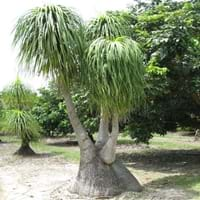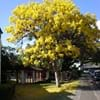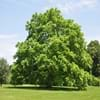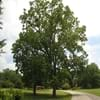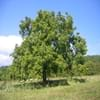Life Span
Annual and Perennial
Biennial
Origin
South America, Brazil
Mexico
Types
Not Available
Cat palm, Date palm, Old Man palm
Habitat
Dry areas, Forest edges
gardens, Grassland
USDA Hardiness Zone
9-12
12-15
Sunset Zone
H1, 13, 16, 17, 18, 19, 20, 21, 22, 23, 24
H1, H2, 13, 16, 17, 18, 19, 20, 21, 22, 23, 24
Habit
Oval or Rounded
Upright/Erect
Flower Color
Yellow, Lemon yellow
Ivory
Flower Color Modifier
Bicolor
Bicolor
Fruit Color
Brown, Sandy Brown
Not Available
Leaf Color in Spring
Green, Light Green
Green
Leaf Color in Summer
Green, Gray Green
Green
Leaf Color in Fall
Green, Gray Green
Green
Leaf Color in Winter
Not Available
Green, Dark Green
Leaf Shape
Oblong
Long hair-like leaves
Plant Season
Spring, Winter
Spring, Summer, Fall, Winter
Sunlight
Full Sun
Full Sun
Type of Soil
Clay, Loam, Sand
Loam, Sand
The pH of Soil
Acidic, Neutral, Alkaline
Neutral
Soil Drainage
Well drained
Well drained
Bloom Time
Early Spring, Late Winter
Spring, Late Spring, Early Summer, Summer, Late Summer, Early Fall, Fall
Tolerances
Drought
Drought
Where to Plant?
Ground
Ground
How to Plant?
Seedlings, Seperation, Vegetative Reproduction
Seedlings
Plant Maintenance
Medium
Medium
Watering Requirements
Keep the ground moist but not water-logged, Requires watering in the growing season, Water more in summer, Water occasionally
Average Water Needs
In Summer
Lots of watering
Lots of watering
In Spring
Moderate
Moderate
In Winter
Average Water
Average Water
Soil pH
Acidic, Neutral, Alkaline
Neutral, Alkaline
Soil Type
Clay, Loam, Sand
Loam, Sand
Soil Drainage Capacity
Well drained
Well drained
Sun Exposure
Full Sun
Full Sun
Pruning
Cut leaves after fall, Pinch or prune as they grow to promote branching and bushiness, Prune before Winter, Prune when plant is dormant, Remove dead leaves, Remove deadheads
Remove damaged leaves, Remove dead branches, Remove dead leaves
Fertilizers
All-Purpose Liquid Fertilizer
All-Purpose Liquid Fertilizer
Pests and Diseases
Pests and diseases free, Red blotch
Red blotch
Plant Tolerance
Drought
Drought
Flower Petal Number
Single
Single
Foliage Texture
Medium
Coarse
Foliage Sheen
Glossy
Glossy
Attracts
Not Available
Bugs, Butterflies, Hummingbirds, Mites, Spider Mites
Allergy
Not Available
Blurred vision, Diarrhea, Rash, Vomiting
Aesthetic Uses
Showy Purposes
Showy Purposes
Beauty Benefits
Not Available
Not Available
Environmental Uses
Air purification
Air purification, Shadow Tree
Medicinal Uses
Not Available
Not Available
Part of Plant Used
Leaves, Wood
Not Available
Other Uses
Wood is used for making furniture, Wood is used in construction
Not Available
Used As Indoor Plant
No
No
Used As Outdoor Plant
Yes
Yes
Garden Design
Feature Plant, Shade Trees, Street Trees, Tropical
Container, Feature Plant, Foundation, Houseplant, Tropical
Botanical Name
HANDROANTHUS billbergii
BEAUCARNEA recurvata
Common Name
Guayacán, Tabebuia
Bottle Palm, Ponytail Palm
In Hindi
Tabebuia
Ponytail Palm
In German
Tabebuia
Pferdeschwanz Palm
In French
Tabebuia
Ponytail Palm
In Spanish
Tabebuia
Cola de caballo de palma
In Greek
Tabebuia
αλογοουρά παλάμη
In Portuguese
Tabebuia
rabo- de palma
In Polish
Tabebuia
kucyk palmowy
In Latin
Tabebuia
ponytail palmarum
Phylum
Not Available
Vascular plant
Class
Not Available
Liliopsida
Order
Lamiales
Asparagales
Family
Bignoniaceae
Liliaceae
Genus
Tabebuia
Beaucarnea
Clade
Angiosperms, Asterids, Eudicots
Angiosperms
Tribe
Not Available
Not Available
Subfamily
Not Available
Nolinoideae
Importance of Tabebuia and Ponytail Palm
Want to have the most appropriate plant for your garden? You might want to know the importance of Tabebuia and Ponytail Palm. Basically, these two plants vary in many aspects. Compare Tabebuia and Ponytail Palm as they differ in many characteristics such as their life, care, benefits, facts, etc. Every gardener must at least have the slightest clue about the plants he wants to plant in his garden. Compare their benefits, which differ in many ways like facts and uses. The medicinal use of Tabebuia is Not Available whereas of Ponytail Palm is Not Available. Tabebuia has beauty benefits as follows: Not Available while Ponytail Palm has beauty benefits as follows: Not Available.
Compare Facts of Tabebuia vs Ponytail Palm
How to choose the best garden plant for your garden depending upon its facts? Here garden plant comparison will help you to solve this query. Compare the facts of Tabebuia vs Ponytail Palm and know which one to choose. As garden plants have benefits and other uses, allergy is also a major drawback of plants for some people. Allergic reactions of Tabebuia are Not Available whereas of Ponytail Palm have Blurred vision, Diarrhea, Rash and Vomiting respectively. Having a fruit bearing plant in your garden can be a plus point of your garden. Tabebuia has no showy fruits and Ponytail Palm has no showy fruits. Also Tabebuia is not flowering and Ponytail Palm is not flowering . You can compare Tabebuia and Ponytail Palm facts and facts of other plants too.

